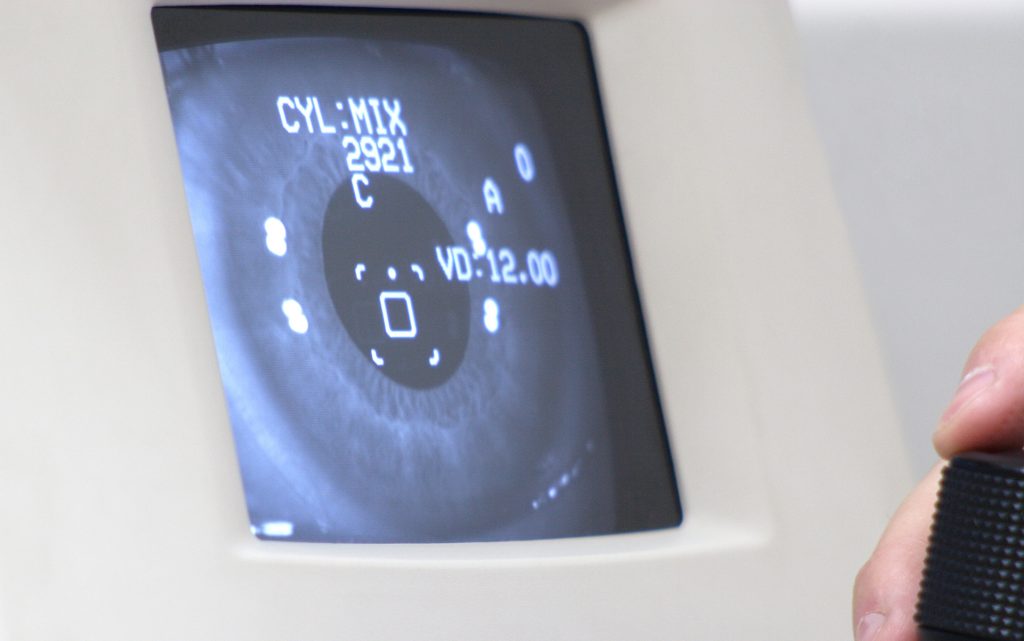
Glaucoma is a common eye condition that often causes optical nerve damage, and when left untreated, can lead to blindness. In the U.S., more than three million Americans live with glaucoma. Globally, the figure is close to 60 million. Glaucoma is recognized as one of the leading causes of irreversible blindness.
Since 1980, surgical procedures and treatments have improved significantly, cutting the risk of developing blindness nearly in half. Nonetheless, while treatment has improved, the number of effective topical drugs remains limited. Recognized near universally in medical marijuana states as a qualifying condition, increasing numbers of people have turned to cannabis to treat their condition. But should they?
Given the improvement of existing glaucoma treatments, do the benefits of medical cannabis outweigh the potential side effects or risks? Likewise, given the vital role the body’s endocannabinoid system plays in disease, what promise does the future hold for developing cannabinoid-derived medications to treat cannabis?
What Causes Glaucoma?
Evidence increasingly suggests glaucoma (now widely considered to be a neurodegenerative condition), has a connection to other neurodegenerative diseases like Alzheimer’s disease. Studies have shown one out of four Alzheimer’s patients also likely has a diagnosis of glaucoma. In fact, glaucoma appears to be a significant predictor of AD. A precise cause of glaucoma, however, remains a mystery and continues to elude the scientific community.Current Glaucoma Treatment Options

Because intraocular pressure (IOP) influences onset and progression of glaucoma, ophthalmologists prescribe treatments that target intraocular pressure. In fact, the only way to prevent vision loss (or eventual blindness) is to lower IOP levels. Depending on the severity and progression, ophthalmologists may treat glaucoma with medications such as prescription eye drops or, if necessary, surgery.
Can Cannabis be Used for Glaucoma Treatment?
Going back to the 1970s, studies have shown that cannabinoids can alleviate glaucoma-related symptoms because they lower the intraocular pressure (IOP) and have neuroprotective actions. For example, in 1971, one of the first studies of its kind found ingestion of cannabis lowers IOP by 25 to 30 percent.Further, because its therapeutic effects on glaucoma are short-term, patients would have to consume cannabis frequently — once every three to four hours. Doctors claim that because glaucoma needs to be treated 24 hours per day, patients would need to consume cannabis six to eight times over the course of a day to achieve consistently lowered IOP levels. Such frequency is hard to maintain and could increase the risk of developing a cannabis use disorder.
However, when it comes to late stage glaucoma, ophthalmologists are more inclined to embrace cannabis as a treatment. At the end stages of glaucoma, it’s less about directly targeting the glaucoma and more about alleviating the accompanying symptoms.
According to ophthalmologist Andrew Bainnson, MD, “We’ve known for some time that medical marijuana is very effective for treating nausea and pain, but not so much for glaucoma,” said Bainnson. “[However,] there are some patients with end stage pain and nausea who may benefit [from medical marijuana], but not from the glaucoma point of view.”
Could Cannabis-Based Treatments Play a Greater Role in the Future?

The body’s own internal cannabinoid system, called the endocannabinoid system (ECS), is one of our most important physiological systems. Nearly every aspect of our health — including inflammation, immune response, neuroprotection, pain modulation — are all dependent on the ECS. Given the vital role of the ECS, particularly in neuroprotection and inflammation, many scientists believe the development of cannabinoid-based medications could be immensely useful in treating (and preventing) glaucoma.
Cannabinoid receptors are prominent in ocular tissues responsible for regulating intraocular pressure. A promising area of research would be to develop cannabinoid-derived medications that target these tissues. Cannabinoid-derived medications could be developed that serve two roles: lowering IOP and protecting retinal cells.

Evidence suggests two cannabinoid agonists — WIN 55212-2 and anandamide — and several cannabinoids including CBD and CBG (cannabigerol), may be good candidates to develop as therapeutic agents, particularly because even when administered topically (directly to the eye), they are well tolerated.
However, challenges not unique to cannabis persist. Oral preparations are not good because bioavailability is poor and absorption is too unpredictable. Inhalation isn’t ideal, because the effects don’t last long enough. That leaves topical preparations. And, currently all forms of eye drops — while superior to oral and inhalation administration — do a poor job at penetrating intraocular tissues. Up to 95% of an administered dose fails to reach the intended target.
While cannabis, as it is administered today, may not be an ideal treatment for glaucoma, the development of cannabinoid-derived medications represent promising future directions. And, whether or not cannabis is an ideal glaucoma treatment, there are some people who swear by it as being a godsend for their glaucoma. Others use cannabis as an adjunct to therapy, but not as their primary treatment.
If you or someone you know has successfully used cannabis to treat glaucoma, share your experience with us in the comments section.




No comments:
Post a Comment